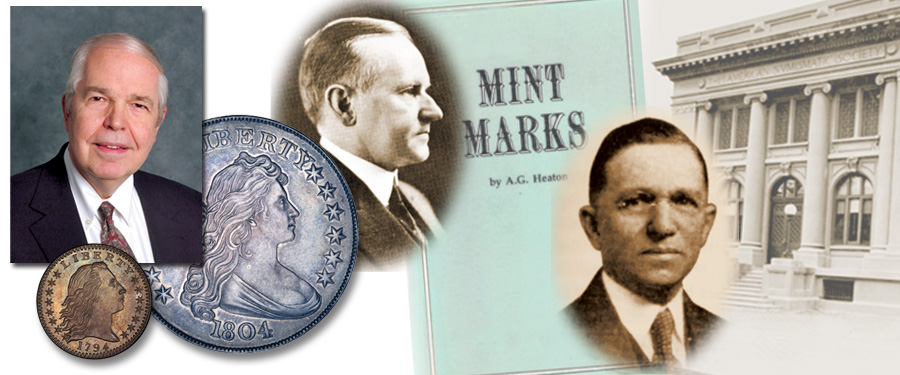
For this week’s blog I give listings for numismatic subjects, each with some history or characteristic. Sometimes what seems to be true isn’t! With a nod to “Wait, Wait Don’t Tell Me,” the popular PBS radio show, and also to Edgar Allan Poe, one of whose works suggested the title, see if you can find out which of each three is correct!
1: About the 1794 silver half dime:
A: Although they are dated 1794, none were struck that year.
B: Miss Liberty is an adaptation of the portrait of Cecilia Biddle, grand dame of Philadelphia society.
C: The dies were cut by Adam Eckfeldt, who had been employed at the Mint since it first opened in 1792.
2: For the 1804-dated silver dollar:
A: Their rarity is explained by the fact that most were shipped to the Mediterranean in foreign payments, and the ship was sunk by Barbary pirates.
B: The first dollars with this date were not struck until 1834.
C: The heraldic eagle on the reverse was the suggestion of President Thomas Jefferson.
3: Regarding famous rare coin dealer B. Max Mehl (1884-1957):
A: Before becoming a coin dealer in 1900, he had a mail-order stamp business based in Forney, Texas.
B: He was born in Russia and came at a young age to America with his family.
C: His inventory was secretly financed by J.W. Scott, the New York City dealer in coins and stamps, to furnish an outlet for excess inventory.
4: For the American Numismatic Society:
A: Its beautiful headquarters building that opened on Audubon Terrace in 1908 was paid for by J.P. Morgan, who later donated his collection to the Society.
B: In 1866 it launched the American Journal of Numismatics, with its first issue devoted to the state coinages of Connecticut, Vermont, New Jersey, and Massachusetts.
C: It was founded in March 1858 in the New York City apartment of teenager Augustus B. Sage.
5: Concerning the American Numismatic Association, headquartered in Colorado Springs:
A: A close runner-up as the city of choice for the ANA Headquarters was Monroe, Michigan.
B: Farran Zerbe, president at the time, rigged the 1909 election for ANA officers.
C: Eva Adams, director of the Mint appointed by President John F. Kennedy, was named to the Numismatic Literary Guild in recognition of several books she wrote on pattern and commemorative coins.
6: Augustus G. Heaton’s 1893 “Treatise on Mint Marks” booklet catalyzed interest in collecting branch mint coins:
A: A few years later in 1897 he and an associate were the first to drive an automobile cross-country from New York City to Manhattan Beach, California.
B: He designed the 50-cent commemorative stamp for the World’s Columbian Exposition.
C: As a teenager he had been a black-faced comedian in a traveling vaudeville show.
7: W. Elliot Woodward, was born in Maine but in the 1860s was an apothecary in Roxbury, Massachusetts:
A: In 1864 he suggested that the Mint honor engraver James B. Longacre by placing his L initial on the Indian cent.
B. The American Journal of Numismatics called him “the lion of the day,” in recognition of his numismatic expertise and quality auction catalogs.
C. His shop in Roxbury included a rare coin counter. It was not discovered until years later in 1872 that Woodward was a secret outlet for patterns and rarities restruck at the Philadelphia Mint.
8: In 1839 the first important numismatic book was published in the United States. The author was J.B. Felt.
A: It told the history of the Philadelphia Mint, its establishment in 1792, and its coinage of the next decade.
B. Coins of ancient Greece and Rome were discussed, there being little interest in America at the time regarding domestic federal coinage.
C. Money of Massachusetts was its subject.
9: Calvin Coolidge, president of the United States from 1923 to 1929:
A: While still living was depicted on a legal tender United States coin.
B. Enjoyed numismatics and at an earlier time wrote a monograph on the 1785-1788 copper coins of Vermont. It was never published, but the manuscript is preserved in the Coolidge Museum in Plymouth, Vermont.
C. Suggested the design used on the 1925 Fort Vancouver commemorative half dollar.
10: Before launching Coin World in 1960, J. Oliver Amos of the Sidney Printing and Publishing Company considered other subjects for a newspaper, including this as one of three finalists:
A: Old cars.
B. Travel trailers and motor homes.
C. Bowling.
–
How well did you do? Here are the answers: 1-A, 2-B, 3-B, 4-C, 5-B, 6-B, 7-B, 8-C, 9-A. 10-C





